Alan Turing will be the face on the £50
On 15 July 2019, we announced that Alan Turing will be on our new £50 note. Watch our video:
On 15 July 2019, we announced that Alan Turing will be on our new £50 note. Watch our video:
Find out what members of our advisory committee said:
We had a fantastic response when we asked you to help us choose the face of the new £50. We got 227,299 nominations for 989 different scientists during our six-week nomination period.
The Banknote Character Advisory Committee, with the help of public focus groups, created a shortlist of 12 options. These were:
Mary Anning (1799-1847) – a self-taught palaeontologist known around the world for the fossil discoveries she made in her hometown of Lyme Regis.
Paul Adrien Maurice Dirac (1902-1984) – whose research revolutionised our understanding of the universe’s smallest matter.
Rosalind Franklin (1920-1958) – who drove the discovery of DNA’s structure, a critical breakthrough in our understanding of the biology of life.
Stephen Hawking (1942-2018) – who made outstanding contributions to our understanding of gravity, space and time.
William (1738-1822) and Caroline Herschel (1750-1848) – a brother and sister astronomy team devoted to uncovering the secrets of the universe.
Dorothy Crowfoot Hodgkin (1910-1994) – whose research using x-ray crystallography delivered ground-breaking discoveries which shaped modern science and helped save lives.
Ada Lovelace (1815-1852) and Charles Babbage (1791-1871) – visionaries who imagined the computer age.
James Clerk Maxwell (1831-1879) – who made discoveries which laid the foundations for technological innovations which have transformed our way of life.
Srinivasa Ramanujan (1887-1920) – whose incredible talent for numbers helped transform modern mathematics.
Ernest Rutherford (1871-1937) – who uncovered the properties of radiation, revealed the secrets of the atom and laid the foundations for nuclear physics.
Frederick Sanger (1918-2013) – whose pioneering research laid the foundations for our understanding of genetics.
Alan Turing (1912-1954) – whose work on early computers, code-breaking achievements and visionary ideas about machine intelligence made him one of the most influential thinkers of the 20th century.
From the shortlist, the Governor chose Alan Turing.
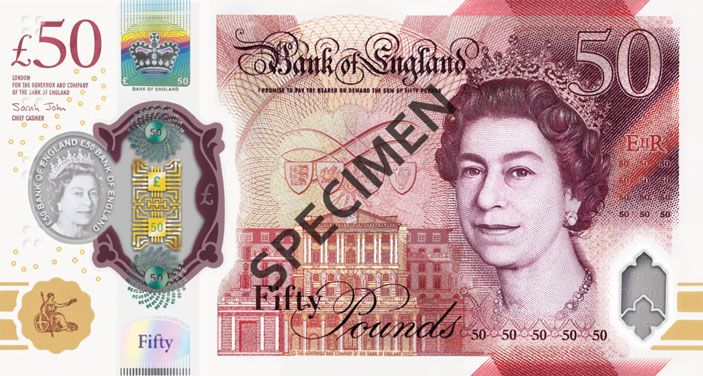
Front of the note
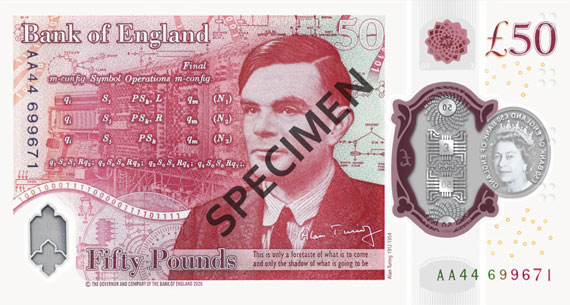
Back of the note
Alan Turing provided the theoretical underpinnings for the modern computer. While best known for his work devising code-breaking machines during WWII, Turing played a pivotal role in the development of early computers first at the National Physical Laboratory and later at the University of Manchester. He set the foundations for work on artificial intelligence by considering the question of whether machines could think. Turing was homosexual and was posthumously pardoned by HM Queen Elizabeth II having been convicted of gross indecency for his relationship with a man. His legacy continues to have an impact on both science and society today.
The new £50 note, our first £50 printed on polymer, will celebrate Alan Turing and his pioneering work with computers. As shown in the concept image, the design on the reverse of the note will feature:
We make the decision based on the characters’ strengths, not how many nominations they get. We also take account of who we’ve chosen in the past, because we want to make sure we feature a wide diversity of people and fields on our notes.
The Governor has responded to a letter from Helen Grant MP about the diversity considerations throughout the character selection process.
Find out more about choosing banknote characters.
We had set a challenge for schools to design their own banknotes and nominate the next character to appear on the £50 note.
Thank you for the fantastic response – there were some very well designed entries.
Here are our favourites of Alan Turing – chosen by our very own banknote designers.
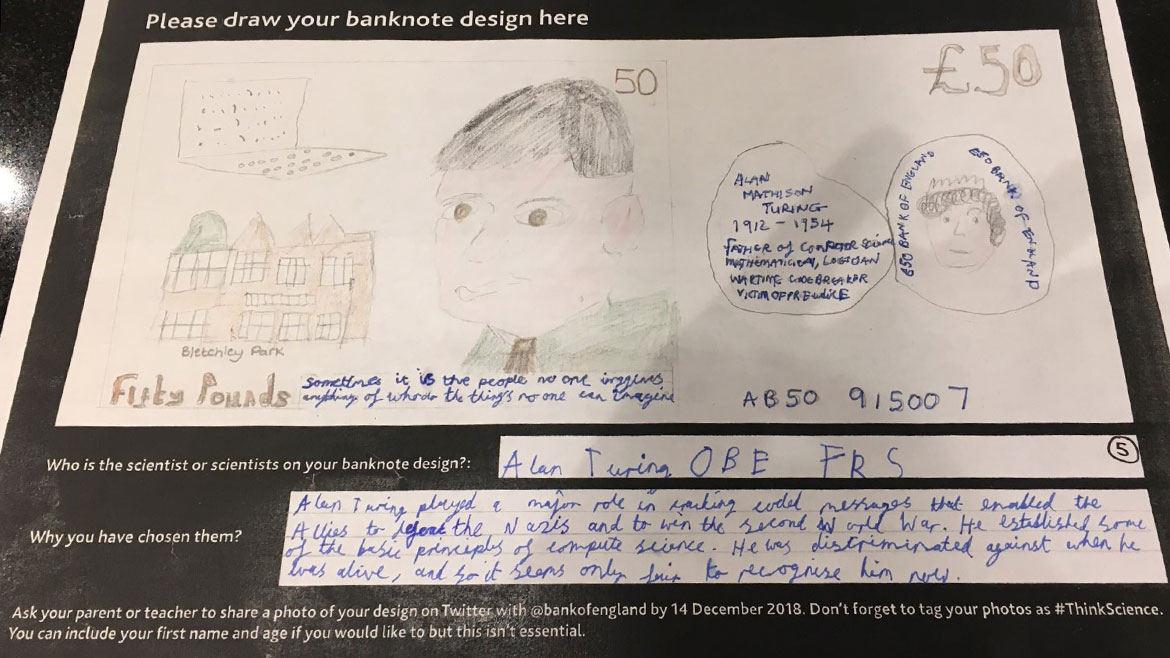
Sent in from Debbie Hewitt on behalf of Wills Hewitt.
“This design has been carefully created using many of the elements from our Bank of England notes; a large centre portrait of Turing, the Queen’s portrait in the see-through window, a quote by Turing, the serial number and a large £50 denomination numeral in the top right corner. Bletchley Park Mansion is beautifully drawn. A great design!” – Bank of England note designer.
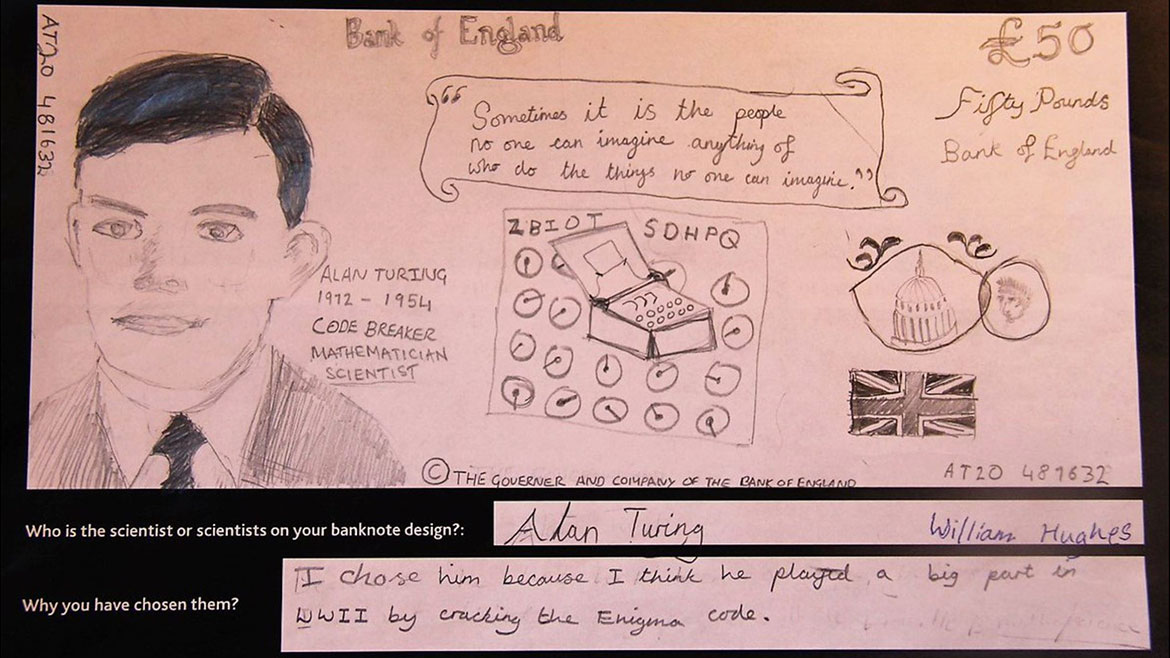
Sent in from William Hughes at Newton Prep School.
“This design includes many of the elements for a great Bank of England banknote design! The fabulous Turing portrait is very detailed and the Enigma and Bombe in the background are excellent supporting images relating to his scientific achievements. The design is completed with a quote from Turing himself. I love the details of the copyright clause, serial number and window as well as the prominent Bank of England title. Well done!” – Bank of England note designer.
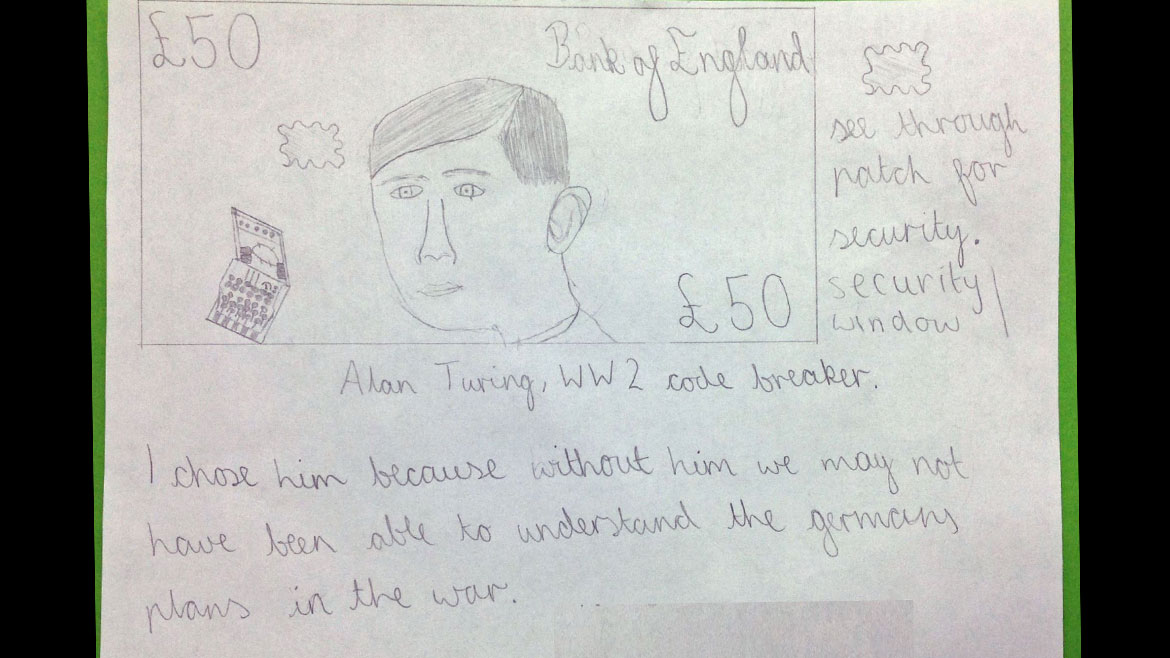
Sent in from The Manor Prep school.
“This design focuses on one of the security features of our banknotes by including an interesting shaped see-through window. The large denomination £50’s in the corners are important for the user to identify the value of the note easily. The portrait of Turing is prominent within the design and the Enigma references his significant achievement. A fabulous design!” – Bank of England note designer.